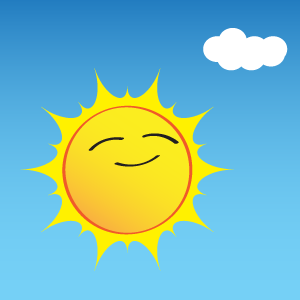Disclaimer: I recognize that there are important societal issues to consider when discussing overpopulation. This is a math/science post, so I'm planning to completely ignore those.
"Humans are overcrowding the planet!" is a concern that crops up at least once a generation. Up until now, I have had little patience with the doomsayers. The idea that a family's children after the first (or second or third) are a burden that the world cannot accept is disturbing and offensive to me. Yes, there are problems that come with larger populations, but I generally choose to trust in our ability to solve those problems.
For example, people have been predicting that we will run out of food at least since the industrial revolution. But the the Haber process (invented ~1910) let us create fertilizer, and was just one in a string of many important innovations that have allowed us to support more and more people. Over and over we have surpassed the supposed "upper limit" of sustainable number of humans, and in the process discovered amazing new things. Science!.
Moreover, I trust in the nature of large systems to be self correcting (i.e. parents can figure out whether they can support another child without me or an economist telling them, and those local decisions will be based on global resource allocation).
BUT! This video from Numberphile has convinced me that there is an inescapable upper bound, and that it is approaching far faster than I would have guessed. They calcualted the number of particles in the human body (~10^29), and in the observable universe (~10^80). So if there is nothing in the universe but people, we could make 10^51 of us. I think it goes without saying that that is a LOT of people.
So, no problem, right? This abstract idea is absurdly impossible, yes? NO! If you assume that the world population (now ~7 billion) continues to grow at it's current rate (a little over 1% per year), we have less than 9000 years before we run out of universe! And even though the video doesn't say this, that 9000 year cut-off applies even if we use not just the normal matter, but also the other 95% of the universe made up of dark matter and dark energy. Clearly, something will have to give before that point, and I'm not willing to bet that thing will be the universe.
Presumably there are some other obstacles in the way before we reach that point, but I think we can agree that we have established an absolute maximum, beyond which even the most optimistic would not try to push us.
_______
And, in unrelated science coolness:
Wikipedia just taught me that the first discussion of gravitational waves (detected last year by LIGO - yay!) was by a scientist named Oliver Heaviside. Another instance of perfect naming. Good article on LIGO here.
Sierpinski's triangle (below) arises from various apparently unrelated things beyond the obvious stepwise removal of smaller triangles. You can find it from chaotic attraction, from the parity of Pascal's triangle, or from turning a line into a trapezoid iteratively. I only knew about the last one, and was surprised to learn that it shows up in other places this way.


















